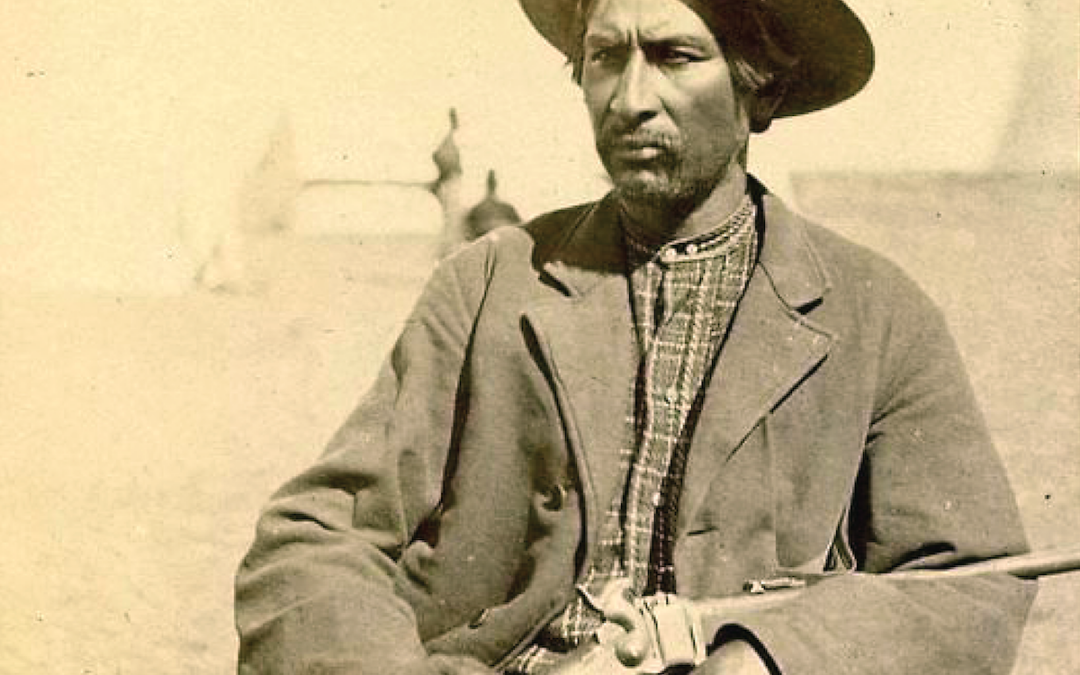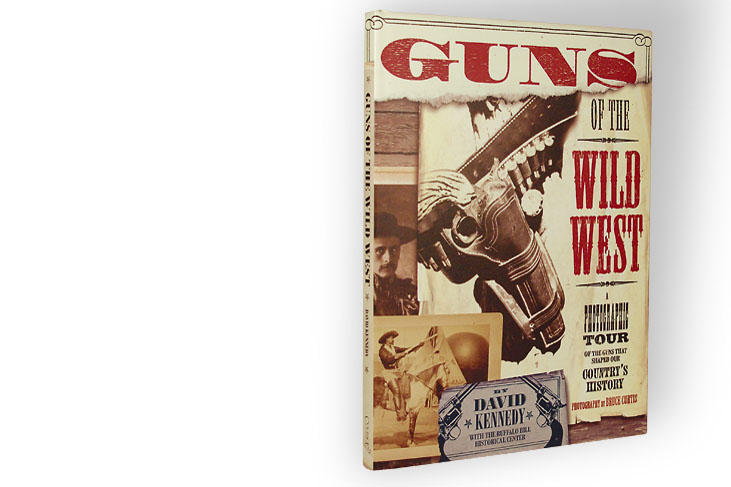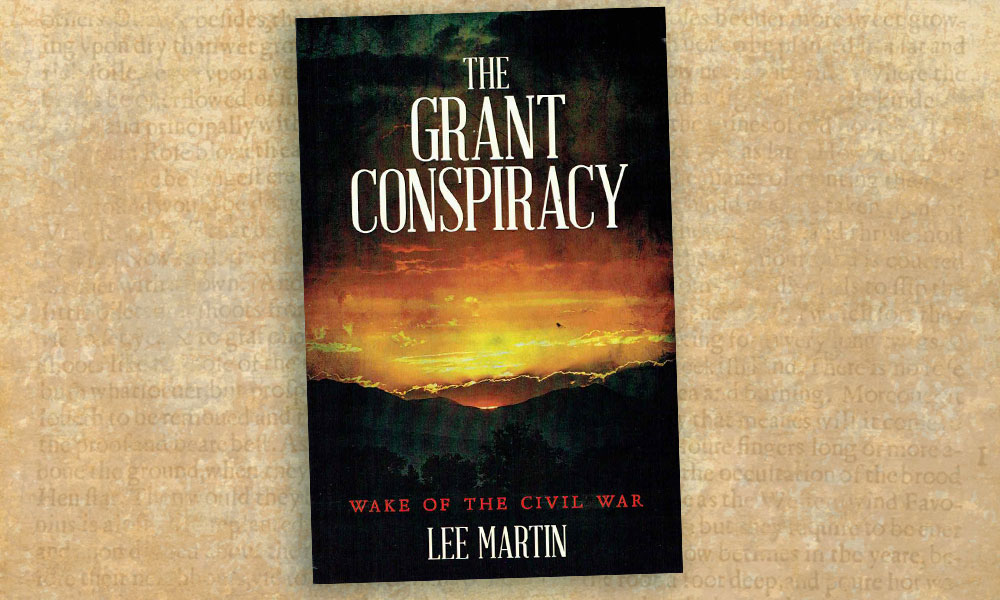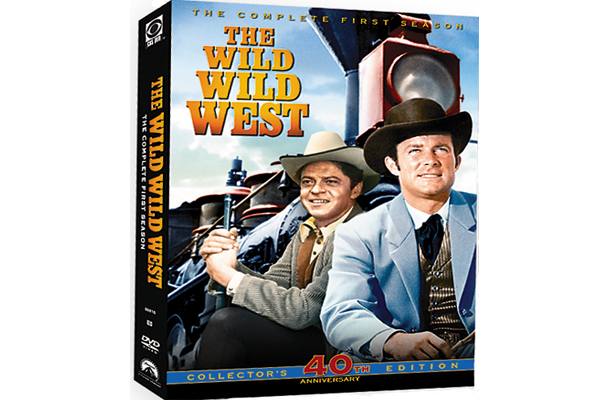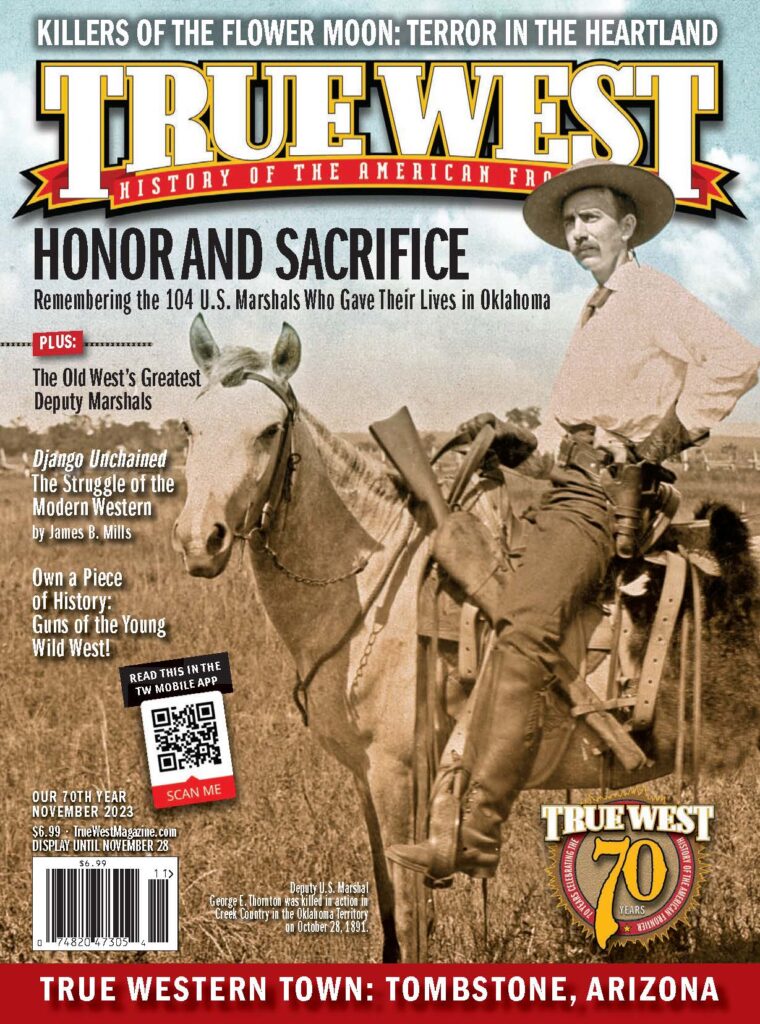Here’s a rundown of some of the more famous guns—and their modern replicas—from before 1873, when the Old West was young.
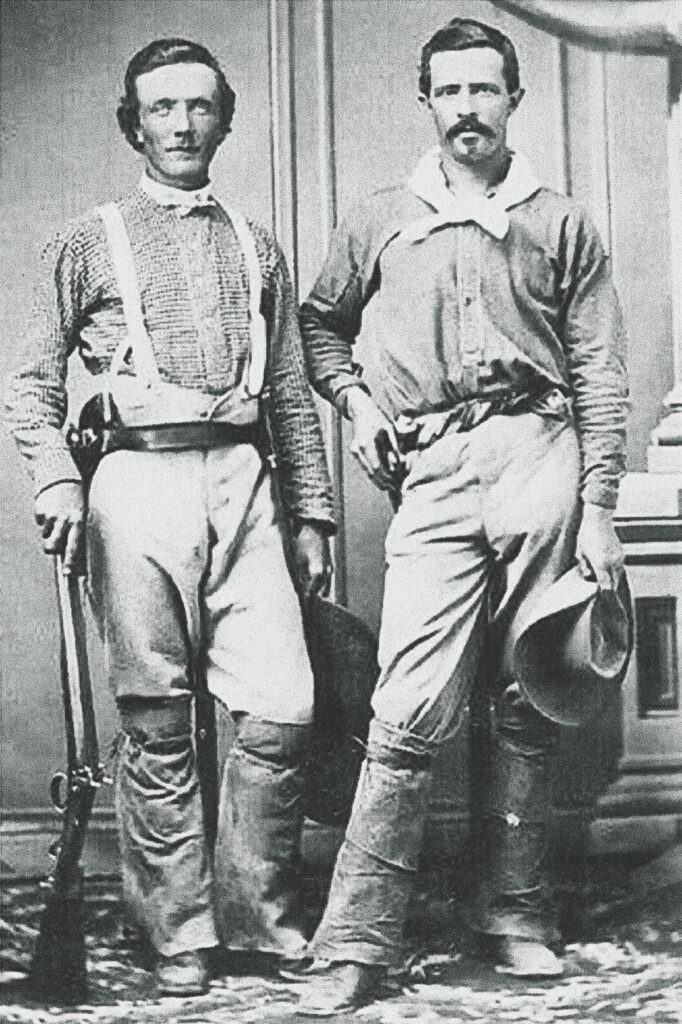
The year 1873 could be called “The Year of the Gun,” because of the introduction of such iconic firearms as the 1873 Colt .45 Single Action Army revolver (SAA), the 1873 Winchester rifle in .44-40 caliber, and the U.S. military’s adoption of the powerful .45-70 Springfield rifle and carbine. However, when these game-changing firearms debuted, much of the American West’s story had already been acted out, much of it with what were then considered “state of the art” guns. The “hardware” available to the frontiersman in the last two decades before 1873 ranged from percussion arms to a handful of then-latest metallic cartridge firearms. Let’s look at a few guns that blazed their way across our Western territories during that colorful period and explore which replicas are available, and who offers them.
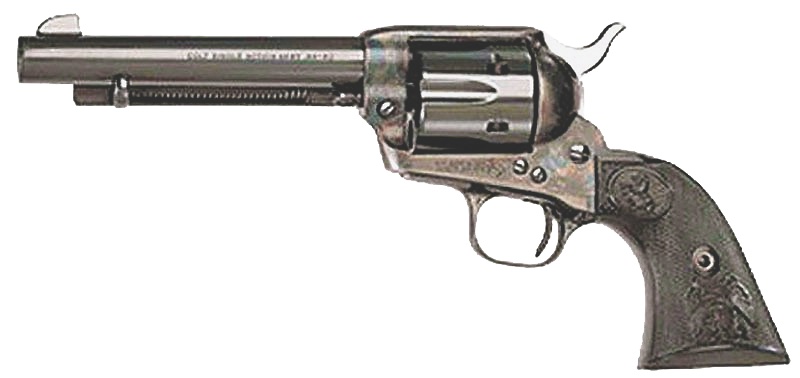

Yesteryear’s Hardware
As America entered the decade of the 1870s, cap and ball firearms were rapidly being replaced by the newer, more reliable metallic cartridge guns. Nonetheless, whether due to economics, availability, or simply a lack of trust of these newfangled “ca’tridge” guns, there were holdouts still clinging to their tried and true caplock arms. Guns like the Hawken Plains rifle, and military muzzleloading rifles like the 1855 or 1860s Springfield and British Enfield rifle-muskets, or breechloaders like the older Sharps, Smith, Maynard and other Civil War-era rifles and carbines remained popular, continuing to see much usage out West.
Professional hunters, scouts and the military who ventured into hostile lands, however, were finding that the then-new cartridge conversion firearms were worth their weight in gold. They favored guns like the .50-70 Allin conversion of the percussion 1861 Springfield and the 1859 and 1863 Sharps, altered to take that same round, along with some newly introduced rifles like Remington’s Split Breech carbine, or their No. 1 Sporting rifles. The famed Sharps Buffalo Gun big-bore rifles were also added to their arsenals, for game hunting, defense and for warfare. In addition to these conversions of the older single-shot guns, the fairly new repeaters that entered the scene during the late war, including the Spencer and the Henry, were guns one could depend on without reserve. The single- and double-barreled percussion and some pinfire shotguns remained the choice of many who needed a good small game or defensive firearm. For lawmen and express men too, the trusty twin-tubed scattergun still ruled. Ironically, it was not uncommon to see a frontiersman with perhaps a metallic-cased longarm and a sidearm in percussion ignition, or vice versa. All said, the guns of the pre-1873 West were often juxtapositions of firepower.
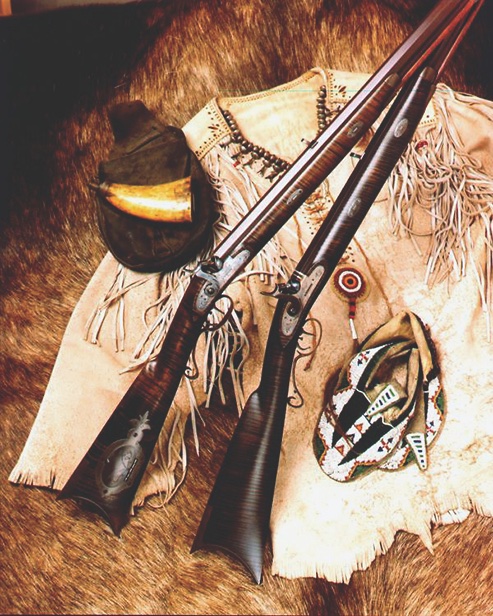
The handgun—especially the revolver—an important piece of hardware to any frontiersman, went from percussion to cartridge conversions to newly designed metal-cased ammo during this era. Popular arms were any of Colt’s open-top cap and ball Army, Navy, Dragoon or Pocket five- and six-shooters, or Colt lookalikes including the Manhattan and Cooper revolvers. Remington’s top strap revolvers, Whitney six guns and Starr single and double-actions, along with myriad wheelguns of the day kept the frontier lively. A small number of single-shot pistols still had a presence in the last few years before 1873, but by that time, they had pretty much had their day. The various cartridge conversions of the caplock revolvers held great appeal—even for several years after the introduction of Colt’s ’73 Army—largely because of the lower prices these conversion arms sold for.
In 1872 Colt produced about 7,000 Open Top revolvers, just prior to the introduction of their legendary 1873 Colt SAA, and S&W produced several small bore five- and six-shooters like the .32 Rimfire No. 2 Army (one of James Butler “Wild Bill” Hickok’s choices). Too, civilian gunsmiths were converting many cap and ball guns in a variety of creative ways. Between the Civil War and 1873, a host of metallic cartridge firearms made their appearance. There were far too many to mention here, but for example, and undoubtedly the most famous revolvers with completely bored-through chambers in their cylinders came from Smith & Wesson (S&W) when that firm broke ground for big-bore six guns with its Model No. 3 American in .44 S&W American caliber. This was quickly followed by its various .44 Russian models.
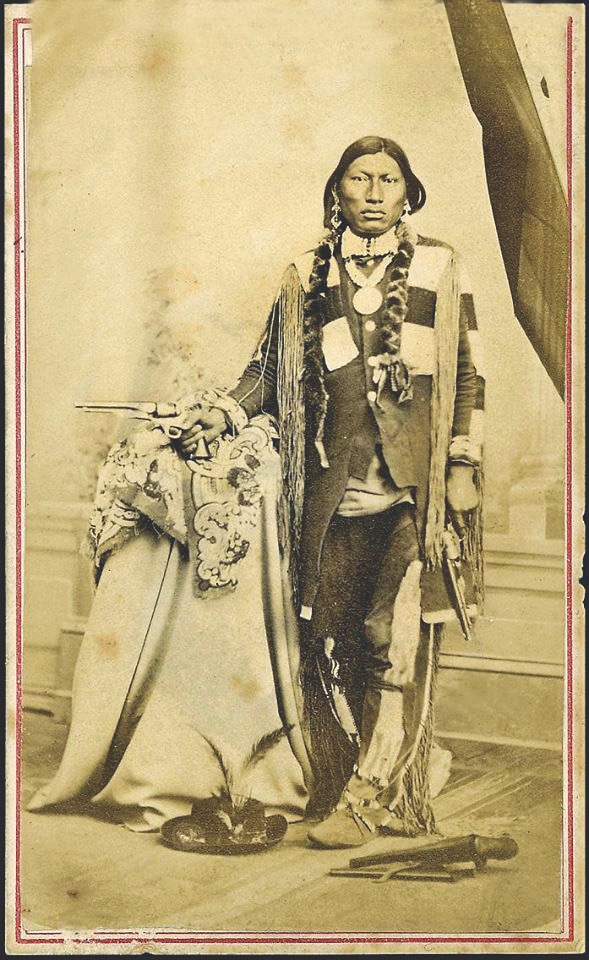
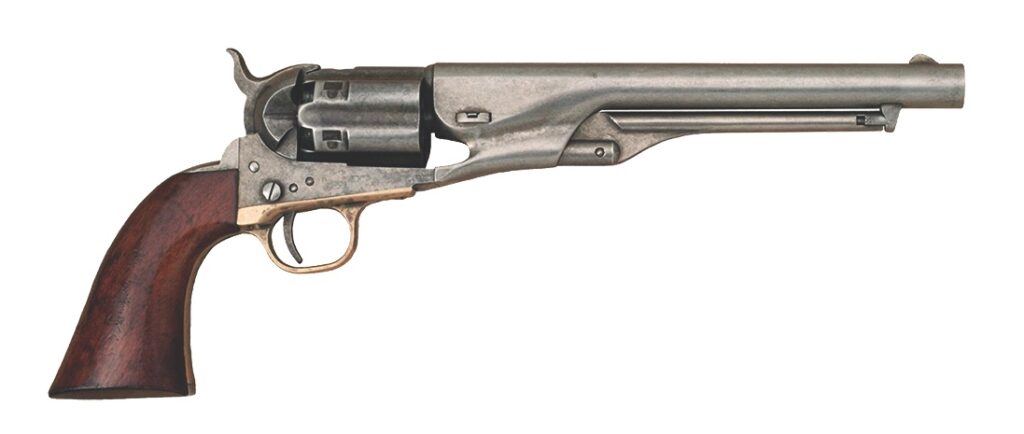
Also in 1872, England’s double-action, easily concealed and powerful British Bull Dog was introduced and gained a fair amount of notoriety with Americans—including Lt. Col. George A. Custer. American arms like the Moore, Reid’s Knuckle Duster, Prescott and several other pocket pistols undoubtedly saw use out West. Let’s not forget the little derringers too. These palm-sized pistols ranged from Henry Deringer’s Philadelphia single-shot percussion pistol to the .41 rimfires like Remington’s famed metallic cartridge Double Derringer, or the one-shot Southerner from Brown (and Merrimack Arms), to multi-round pocket pistols from Colt, Remington, S&W, Connecticut Arms Co. and others. From Mexico to Montana, any of these concealable handguns could be found hidden among the pockets and folds of a Westerner’s clothing—regardless of gender.
As we can see, there was a vast selection of shooting irons pioneers could choose from in order to be “well heeled.” Nowadays, thanks to the manufacturers and importers of replica firearms, history buffs and Western gun enthusiasts can enjoy a great variety of quality reproductions of the guns of yesteryear—and at affordable prices—especially when compared to purchasing an original in safe, shootable condition. These replicas are made to be fired and enjoyed at the range, during reenactments, or in the hunting fields—and they can also serve as self-defense arms if needed. While I’m not advocating the use of a historical replica arm over a modern gun, remember that just because it is a replica of an old-time gun, it can serve for protection if no modern arm is available. Defense or offense were the primary reasons many of the originals were designed for, and they have a notable history of serving their purpose.
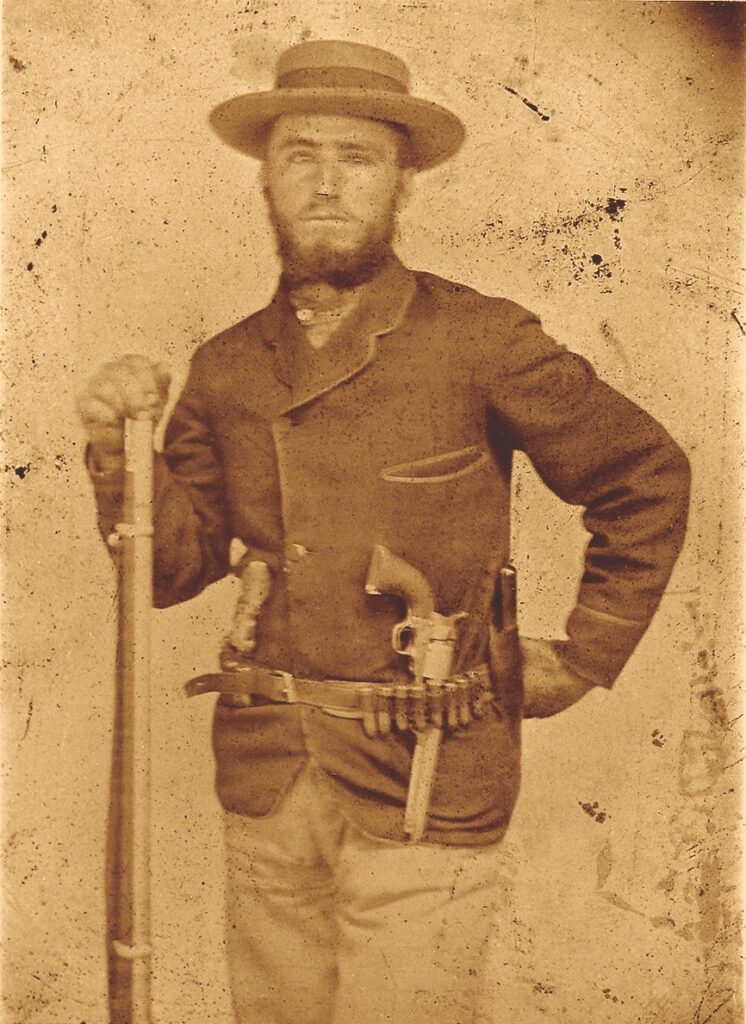
Pre-1873 Guns Live On
If you are looking for a muzzleloading Plains Rifle like the Hawken, the favorite of frontiersmen like Kit Cason and Mariano Modena, you’d do well to contact either The Hawken Shop in St. Louis, Missouri (thehawkenshop.com) which offers “Do it Yourself” Hawken rifle kits along with component parts, so you can custom-make a Hawken of your own just the way you want it. For a fully finished quality replica Hawken, imported from Italy’s Davide Pedersoli & C., you can check with Dixie Gun Works (dixiegunworks.com) or Taylor’s & Company (taylorsfirearms.com) and look at their selections of Hawken rifles, Kentucky rifles and other front-loading longarms of the early West. As a personal sidelight, this writer can say that from my own experience, hunting with a Hawken rifle is a challenge and a thrill any vintage firearm buff would enjoy. Maybe you have a hankering for one of the Civil War-era, single-shot percussion breechloaders like the 1863 Sharps or a Smith carbine. If these breechloaders appeal to you, look to EMF Co., Inc. (emf-company.com) or Taylor’s & Company for a percussion/cartridge Smith carbine replica or an 1863 Sharps clone. Shiloh Rifle Manufacturing Co. (shilohrifle.com) only offers the 1863 Sharps model in carbine or infantry rifle configuration. Remember, all replica muzzle-loading arms are made strictly for use with black powder.
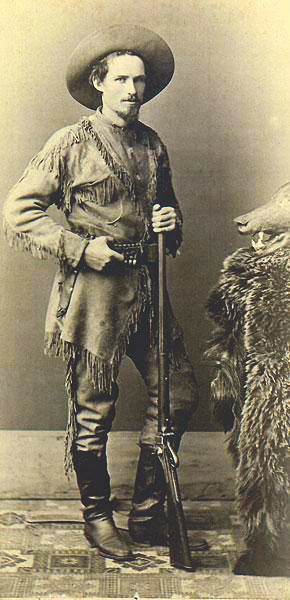
If you’ve set your sights on single-shot, metallic cartridge guns of the post-1865 period, which are capable of handling factory smokeless powder ammunition, there is an arsenal full of choices. To find rifles such as the 1871 Remington Rolling Block, or the 1874 Sharps (which was actually introduced by Sharps in 1871), you’d do well to look up Cimarron Firearms (cimmaron-firearms.com), Chiappa (chiappafirearms.com) Dixie Gun Works, Uberti USA (uberti-usa.com) or EMF to see what Pedersoli imports they offer. Home-grown companies like Shiloh and C. Sharps Arms Co., Inc. (csharpsarms.com) both produce exquisite reproductions of different 1874 models (Sporters, Creedmoors, etc.). Shiloh, of course, is well known for creating the famed Quigley Sharps from Tom Selleck’s Australian/Western movie Quigley Down Under, along with other superb Sharps clones. I’ve handled and hunted with the Pedersoli import replicas as well as the American-made Shiloh and C. Sharps’ rifles with much success.
Lever-action gunners have several newly produced frontier-style Winchester rifles (1873-95 models, manufactured by Miroku Corp. of Japan) to choose from by Winchester Repeating Arms Co. (winchesterguns.com), and several companies also import replicas of the different frontier repeaters such as the 1860 and the 1865 Spencer carbine, and the 1866 “Yellowboy” Winchester clone—including the 1860 Henry repeater. You’ll need plenty of time to check out all the various models available from Cimarron, Dixie Gun Works, Chiappa, EMF Co., Taylor’s & Co. and Uberti USA (uberti-usa.com).

Speaking of the 1860 Henry rifle, a handsome version of that “Damned Yankee rifle that you load on Sunday and shoot all week” is being made in the good old USA by Henry USA (henryusa.com) along with their many traditionally inspired, but more modern Henry rifles, like the Golden Boy .22 or their Big Boy in .45-70. Scattergunners will find a selection of double-barreled shotgun offerings in pre-1873 configuration (exposed sidehammers) and in full-length or the shorter-tubed coach gun models from most of the above importers listed. There are too many variations to list here, so hit the ol’ internet trail for a quality Old West shotgun.
Percussion revolvers like the various Colt and Remington models are offered by most of the replica outfits that sell black powder revolvers. These include Cimarron Firearms, Dixie Gun Works, EMF Co., Taylor’s & Company and Uberti USA. Dixie Gun Works also offers replicas of the Starr single- and double-action percussion revolvers and the big LeMat, although it’s not likely many LeMat revolving hand cannons would have been seen on the frontier. Cartridge conversion revolvers have enjoyed favor in recent years. Six guns, like the handsome copies of the Colt Richards and Richards-Mason style Army and Navy models and the Remington conversions, are being packed by more and more Old West reenactors and sport shooters.

Among the pre-1873 guns that were made strictly as metallic cartridge revolvers, is Cimarron’s Uberti-made copy of S&W’s First Model No. 3 American revolver, introduced a couple of years ago. Historically, it was the first practical large-bore (.44 American caliber) U.S.-made (manufactured in 1870-72), metallic cartridge six-shooter. Cimarron and others, including Dixie Gun Works, EMF Co., and Taylor’s & Company, are importing clones of the later S&W Russian model with its unique spur on the trigger guard. These companies are well worth looking into for your next piece of frontier hardware. Even though I’ve devoted this article strictly to the guns that were in use before 1873, I feel the game-changing and original 1873 Colt SAA should be mentioned since it is still being manufactured and offered by Colt (colt.com). Contact them for details on acquiring a newly manufactured, but historic, Colt .45 Peacemaker.

Care and Feeding of Replicas
If you’re hunting for a metallic cartridge replica firearm, there are a number of sources for commercially manufactured, smokeless powder factory ammunition, including some who offer lower recoil Cowboy Action loads for the guns listed in this piece. Ammo ranging from small bore to the large caliber and Cowboy Action offerings are available from Aguila Ammunition, Atomic Ammunition, Black Hills Ammunition, Cowboy Choice, Fiocchi, Hornady, HSM, Magtech, Remington, Sellier & Bellot and Winchester. If you shoot a lot, you may eventually find the need for replacement parts. VTI Replica Gun Parts can supply over 10,000 different rifle and handgun components for replicas, including those from Armi San Marcos, Uberti, Pietta, Pedersoli, IAB and others. I’ve obtained component parts from VTI several times and have always been happy with the parts and the service. Keep them in mind if you need replacement parts for your replica firearms.
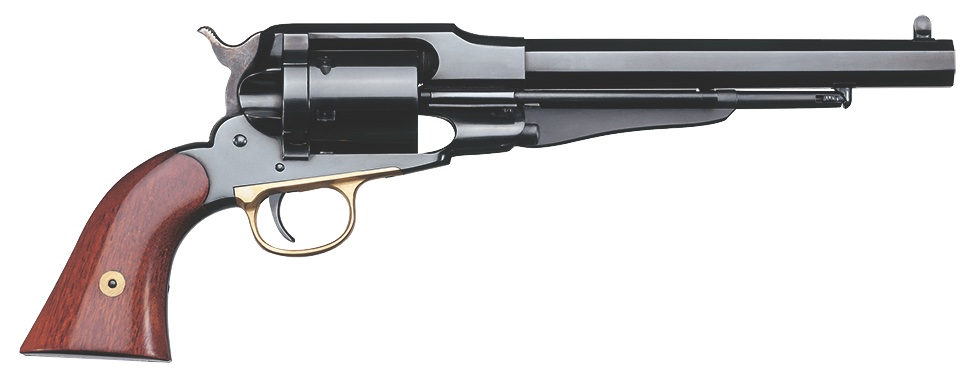
Although many of the modern replica houses sell accurate copies of actual models of frontier firearms, nearly all of them also offer guns that are not copies of actual known factory-manufactured models from that era. Rather, they are imported variations of revolvers with non-original features such as birds-head grips, snub-nosed or octagon-barreled models and six-shooters with brass—rather than blued steel—back straps and other non-historic modifications of caplock and metallic cartridge guns in order to appeal to various shooters. If it’s a realistic, historic copy you want, rather than one altered with non-factory touches, a bit of research would be in order before making a purchase.
Now you know the types of guns used before the introduction of the 1873 Winchester .44-40, the Colt Single Action Army .45 and the U.S. Government’s .45-70 Springfield trapdoor. Firearms from the decades when the Old West was young represent some of the most interesting frontier shooting irons.


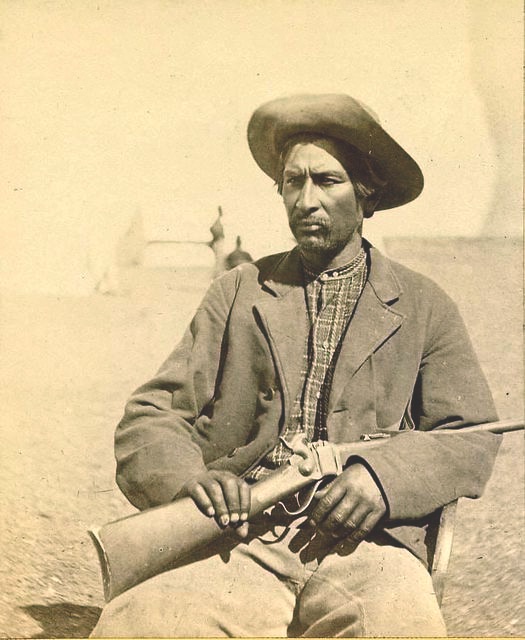

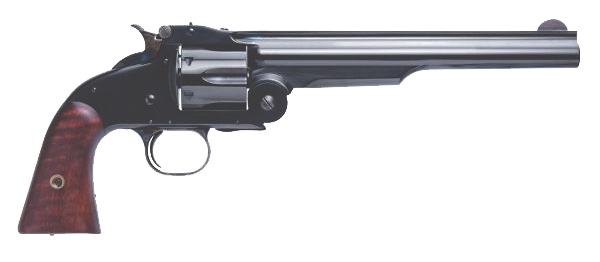
Courtesy Cimarron Firearms

